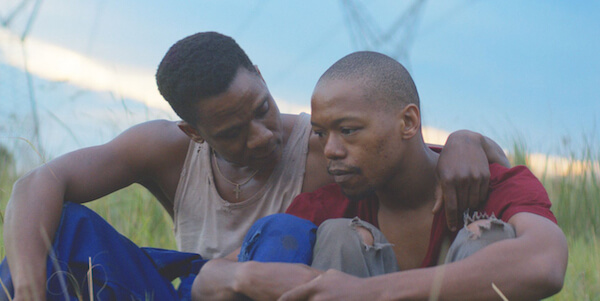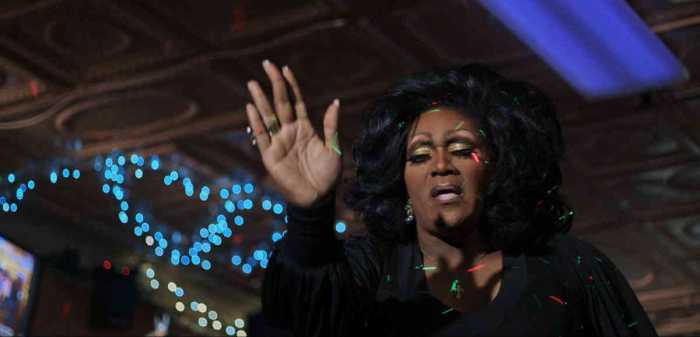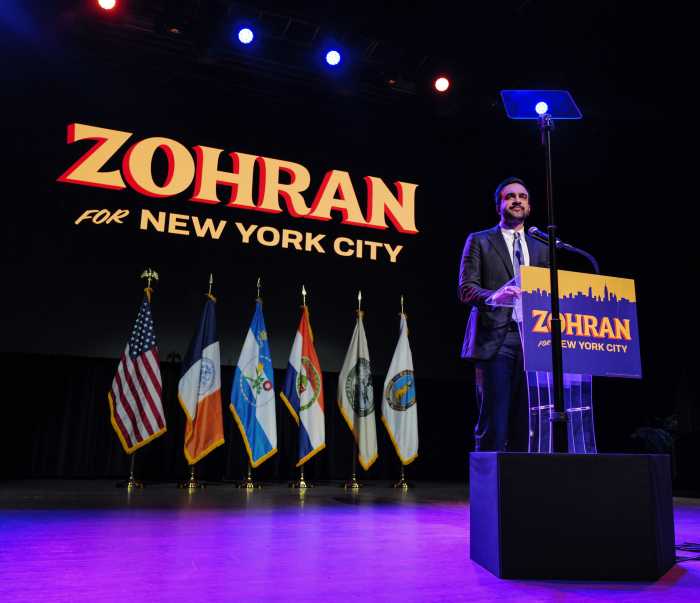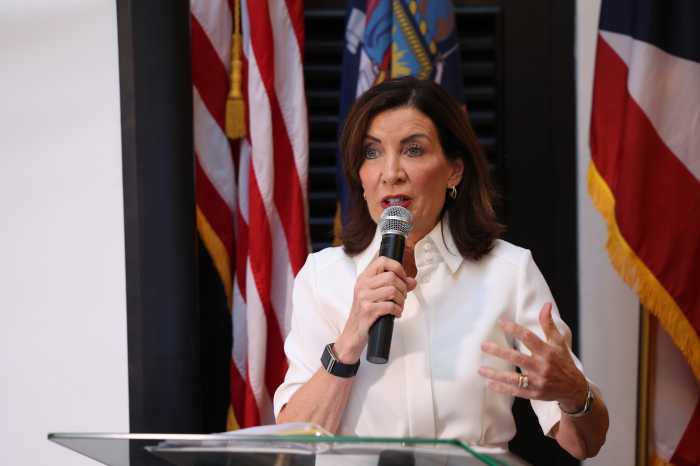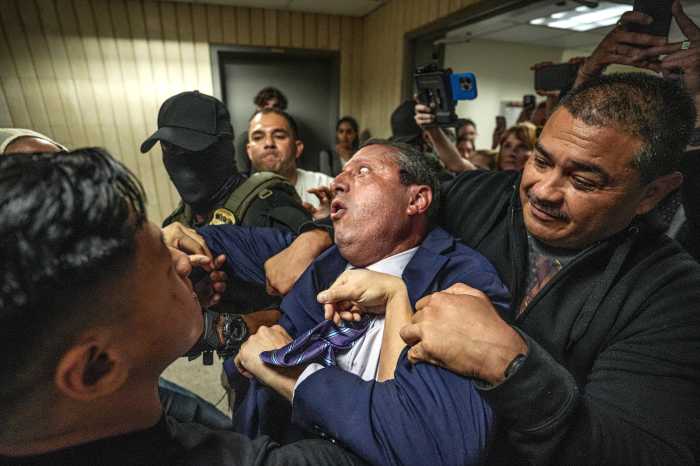Bongile Mantsai and Nakhane Touré in John Trengove’s feature debut “The Wound.” | KINO LORBER
Out director/ co-writer John Trengove’s remarkable feature debut, “The Wound,” opens with Xolani (openly gay musician Nakhane Touré, in an astonishing performance) leaving his Johannesburg factory job to head out to the mountains in the Eastern Cape of South Africa. There, he will be a caregiver for Kwanda (Niza Jay Ncoyini), a “soft” (read queer) initiate in a manhood ritual involving circumcision. Xolani, however, is more interested in reconnecting with his lover, Vija (Bongile Mantsai), another caregiver, who does not identify as gay.
“The Wound” is compelling because Trengove deftly captures shifts in power and shadings in sexuality as Vija toys with Xolani’s affections and tangles with Kwanda, who is on to his games.
Nakhane Touré shines in John Trengove’s story set among South Africa’s Xhosa
Trengove spoke with Gay City News about his film’s depiction of manhood rituals and homosocial bonding, as well as pride, shame, and power.
GARY M. KRAMER: What fascinated you about the Xhosa culture and manhood rituals?
JOHN TRENGOVE: Like many men of my generation, I don’t know that I am a man. What does that mean? I’m getting older and I’m still grappling with where do I fit in and how should I behave? That there is a ritual that has a community of men showing a young boy his place in the world of men is for me — having never experienced anything like that — a potent and interesting idea. Before “The Wound” existed, I was fascinated with the initiation for that reason.
GMK: I admire how you portray isolation and homosocialization in the film. This is a very masculine community, and the queer characters are continually ostracized. Can you discuss this?
JT: I think that is what this rite of passage is really about — realigning the identity in a community of men. The thing for me that is so potent about Xolani’s experience is that he occupies this strange double standard — he is accepted and integrated in the patriarchal organism, but is also oppressed and ostracized by it. Those contradictory things sit together in an unspoken way. If Xolani doesn’t express his inner life and feeling or say certain things or feelings, his homosexuality is tolerated. A blind eye is turned. When the ideas start finding expression, the system can no longer hold and he is ostracized.
GMK: What observations do you have about creating the film’s three protagonists and their interactions?
JT: It’s something that evolved organically. There was no explicit design. Looking back on it, they are all outsiders struggling with this idea of a masculine ideal and reacting differently. Kwanda subverts and rejects it. Xolani submits to it, and Vija turns it in to hyper-masculine theater, he exaggerates it. They are all reacting to the same thing.
The dynamic between Xolani and Vija is a love story, and I think that the mutual love is, in fact, very strong. But Vija chooses to repress his deeper feelings, and that is convenient — it gives him a position of power. In the course of the story, as Xolani pushes him and the status quo, some of his stronger emotions bubble to the surface. What’s significant is that the only way he knows how to react to these feelings is through violence.
As much as Kwanda outwardly rejects the society, he craves it as well. As a white middle class outsider and a gay man, I invested the character of Kwanda with my ideas… I see the story like a virus. There’s an organism that is imperfect but functional, and along comes this virus that enters and challenges the organism. You think the cells will be transformed, but they reject it.
GMK: There are many issues of pride and shame in the film. Can you talk about how you wanted to explore these themes vis-à-vis masculinity and sexuality?
JT: I think that there is something in the idea of softness in the culture that is equated with shame and feelings about not being masculine or male enough, and that the ritual toughens up young men. Softness and feeling need to be repressed and not seen, and if it is seen it has to be violently repressed or stopped. Those were the connections I was working with. A lot of it came out of research in Xhosa language. With certain expressions, softness and homosexuality are equated, and men disconnected or drifted away from their traditional culture are “soft.”
GMK: Many scenes have either a homoerotic quality to them or are fraught with danger. Can you talk about the tone of “The Wound?”
JT: It started with it being set in an all-male universe, which is very attractive to me because something allegorical happens in that moment where one gender is isolated. You move into metaphor and non-literal expression. You read signs and moments.
The other thing for me is that the film is strong with the ritual about doing. It’s not about thinking about things but demonstrating who you are through what you do. It was always about finding ways of showing the undercurrents, the erotic tensions under the surface of the physical activity, the woodcutting, the fighting.
Also, in this all-male space, I had a real opportunity to explore the full range of experience within the company of men — power plays, politics, intimacy, and sexuality. There’s a rich range of experience in the film and true of male-only communities. A lot of these moments have more value. There is violence and power play in the sex, and at all times sex is an opportunity to express the subtext of the relationship.
THE WOUND | Directed by John Trengove | Kino Lorber | In Xhosa with English subtitles | Aug. 16-29 | Film Forum, 209 W. Houston St. | filmforum.org

